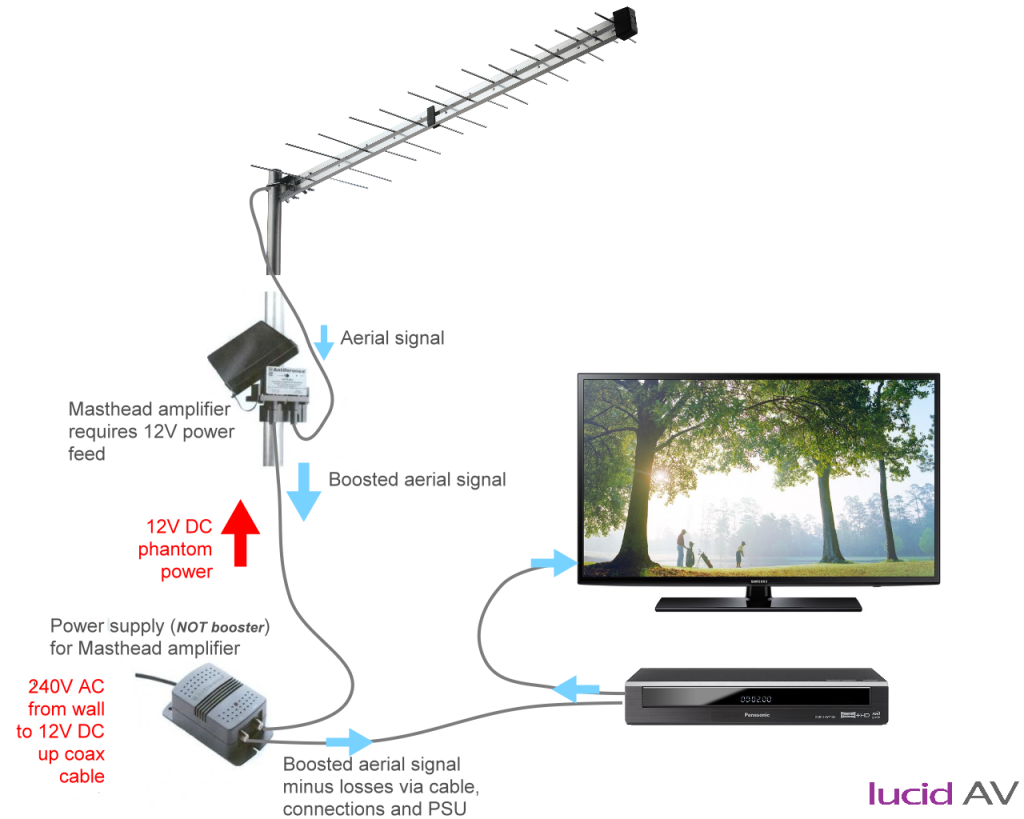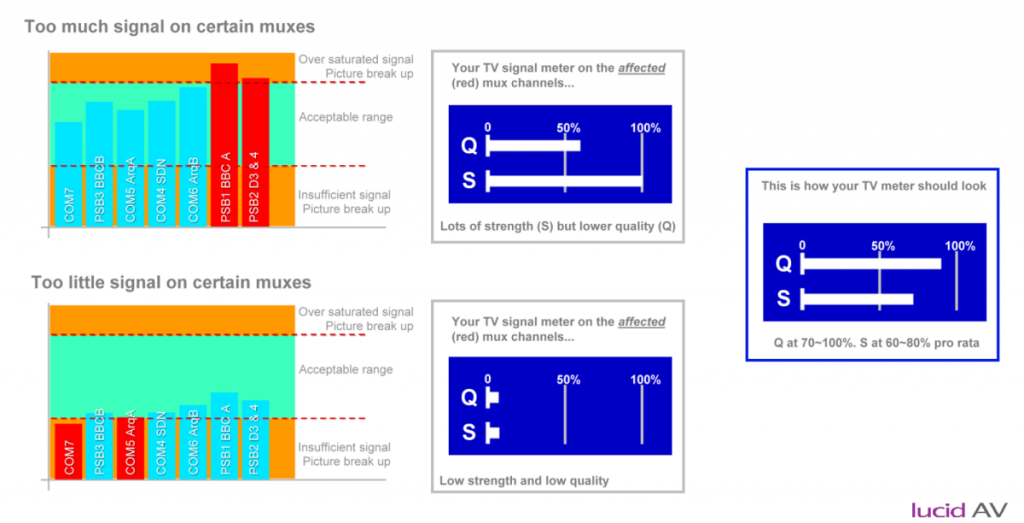What you're thinking of as the "booster" is actually just a 12V DC power supply. It's sending power up the aerial cable to the real booster somewhere either in the loft or on the aerial mast. If it's designed to go on the mast then it's called a Masthead Amp (unsurprisingly). It doesn't mean it has to be on the TV mast though.
The same kind of power supply might be used to power a multi-way distribution amplifier located in the loft. Remote power like this is referred to as "phantom power". It's safer that leaving a 240V device unattended in the loft or trying to power something out in the elements with 240V.
Changing the PSF1200 then will do nothing unless it's actually faulty in some way. I wouldn't rule that out, but I'd certainly investigate a bit further before pointing the finger.
Blocking, freezing, skipping can be caused by lots of signal power related issues. The basics are either too little or too much signal. The way digital works is that channels are grouped in to what's known as muxes (multiplex). For example; receiving the PSB1 BBCA mux will provide the TV with 1 BBC One (regional), 2 BBC Two England, 7 BBC Three, 9 BBC Four, 120 CBBC, 121 CBeebies, 130 BBC News, 131 BBC Parliament, 301 BBC Red Button 1, plus 13 others. If you're getting a problem with one of those channels then the others in the group will be affected the same way too. So, your first job is to find out specifically which channels are affected so you can determine which muxes are causing the problem. Once you know that then you're half way to finding out if it's a signal power issue. Here's a list of the muxes and the TV channels each carries. This is the same for any location in the UK. Where things might change is if your local transmitter is a repeater station or a Freeview Lite transmitter.
Next, the muxes are not all the same power. The PSB ones are Public Service Broadcast, so these are the ones that have to reach as many UK residents as possible. They're broadcast with the highest power and given priority on the Lite transmitters. The COM ones stand for commercial. They're run at lower powers or not at all on Lite transmitters.
By now you should have enough information to work out if there's a pattern to the signal disruption.
Things get slightly more complicated when the aerial's reception characteristics are thrown in to the mix. The typical "wideband high gain" aerials are decent at the upper end of the frequency range but poor with the lower mux channel numbers. So it's possible to have a situation where an aerial was installed that had marginal reception with the lower power muxes. It's then moved or something else has happened to degrade the signal just beyond the threshold of what's acceptable.
If there's too much signal then that could be because of the recent channel shuffling. A strong PSB channel that was originally placed where a wideband aerial is weakest might well have been just under the upper limit. If it was moved further up the frequency range then it could have tipped over the top.
Have a look at the TV and PVR's signal meters. They aren't 100% accurate but they will help you look at trends. Signal Quality is the most important. That should be the higher value out of the two bars. Signal Strength is far less important.
None of this rules out other issues such as tree growth, new buildings, aerial being put up poorly etc etc or something as simple as a difference in the sensitivity of the tuners.



